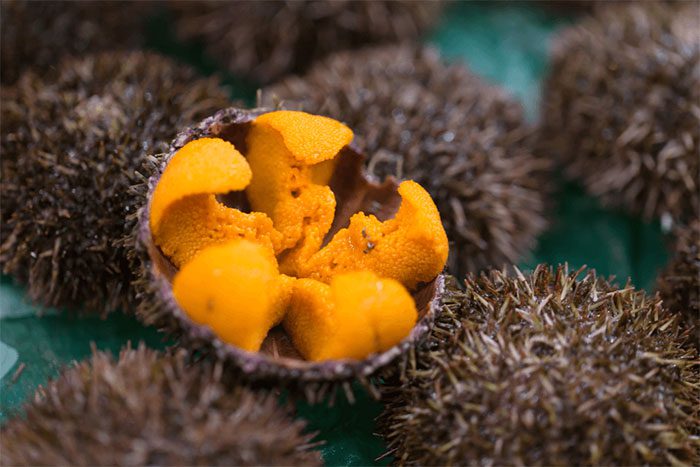Researchers have discovered that quinonoid compounds are rare components found in the shells of sea urchins, which possess antioxidant properties, leading to the development of a practical extraction method.
The research team from the Nha Trang Institute for Research and Applied Technology (Vietnam Academy of Science and Technology) collaborated with the G.B. Elyakov Pacific Ocean Organic Chemistry Institute, Far Eastern Branch (Russian Academy of Sciences) to successfully develop a process for extracting a mixture of antioxidant compounds from sea urchins. This process has been granted a utility solution patent by the Intellectual Property Office, Ministry of Science and Technology.

In Vietnam, there are approximately 60 species of sea urchins.
Sea urchins belong to the phylum Echinodermata and the class Echinoidea. They are found in most marine regions around the world, with an estimated 600 species. In countries like China, Japan, France, and the United States, some species are cultivated for food.
In Vietnam, there are approximately 60 species of sea urchins, distributed in warm waters from Quang Ngai to Binh Thuan. Locals often use the eggs of these creatures as nutritious food, while the shells and spines, which make up 40-70% of the sea urchin’s weight, are typically discarded.
Research has shown that the shells and spines of sea urchins contain unique biologically active substances and quinonoid pigments, prompting efforts to extract these compounds. The pigments include echinochrome A (Ech A), spinochromes (Sp E, Sp D, Sp A, Sp C), and binaptoquinones BiNQ-1 and BiNQ-2, which exhibit significant antioxidant properties capable of neutralizing the effects of oxidative stress caused by reactive oxygen species (ROS) on cell membrane lipids, particularly in tissues affected by stroke, differing from endogenous antioxidants such as vitamin E and ubiquinone.
The research team utilized acid to dissolve the calcareous clusters in the spines. They then extracted the quinonoid pigment dissolved in alcohol to obtain the antioxidant compounds. This natural pigment shows promise for use as a food additive and in high-activity pharmaceuticals, as well as in producing formulations for various diseases. Furthermore, the research opens up possibilities for discovering new natural compounds from sea urchins along the coast of Vietnam, especially in the waters of Khanh Hoa.
According to Dr. Vo Mai Nhu Hieu from the Nha Trang Institute for Research and Applied Technology, all defects that occur in the human body, such as aging processes, cataracts, thrombosis, myocardial infarction, and other diseases, are related to the presence of reactive oxygen species (ROS). Therefore, a biological system well-protected by antioxidants will contribute to a healthier body.
“The antioxidant compounds in sea urchins are significantly higher than those in current commercial antioxidants. However, to integrate these into practical products, commercialization will require quality assessment and testing according to regulations. For example, cosmetic products must comply with the Ministry of Health standards,” Dr. Hieu stated.


















































